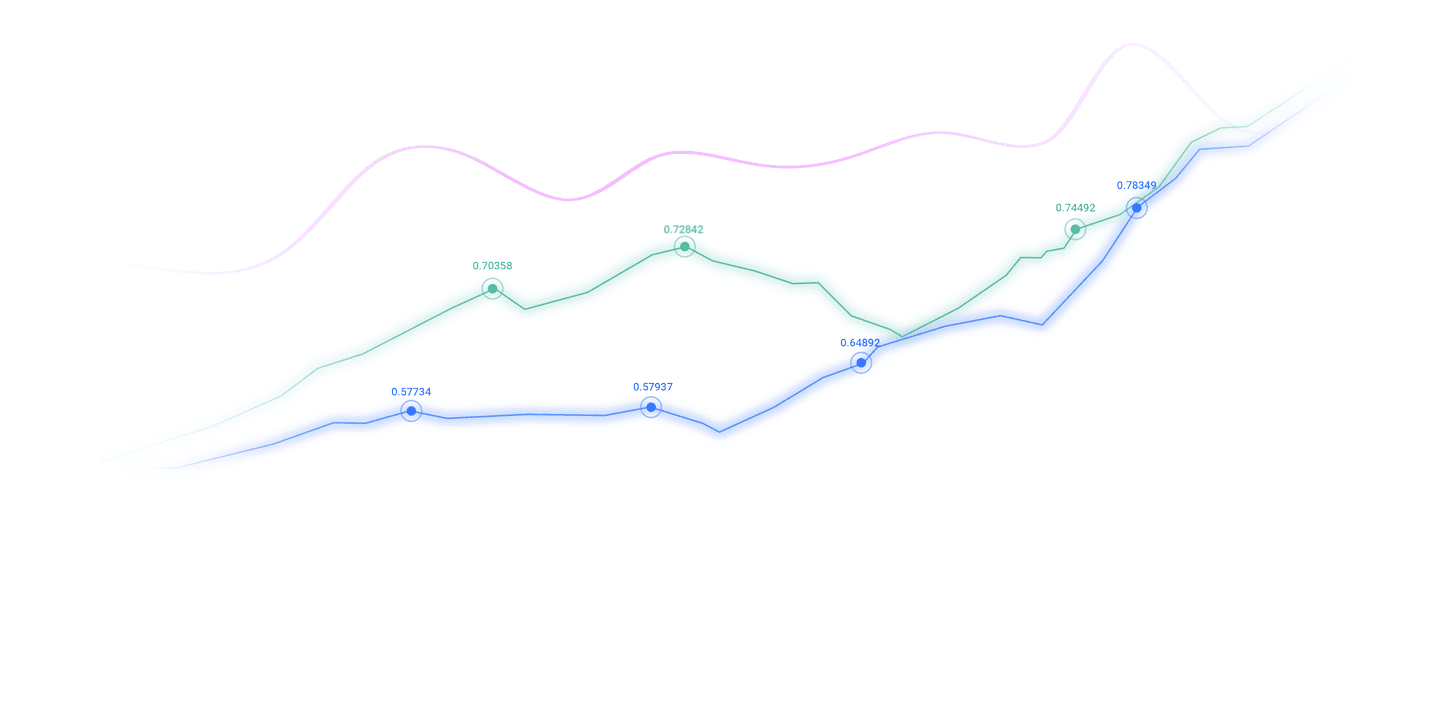Trusted by over 15 Million Traders
The Most Awarded Broker
for a Reason
CATEGORIES
News
- Chinese live lecture today's preview
- USD/Canada fell near 1.3720 as USD correction
- The U.S.-European trade prospects suppress gold prices, and the impact of the U.
- RBA releases minutes of meeting, AUDUSD's response is dull
- Powell is still speaking? Powder kegs of Pakistan, Israel, Russia and Ukraine ha
market news
Could the U.S. dollar become a "headless fly" and hit 99?
Wonderful introduction:
Optimism is the line of egrets that go straight up to the sky, optimism is the thousands of white sails on the side of the sunken boat, optimism is the luxuriant grass blowing in the wind at the head of Parrot Island, optimism is the little bits of falling red that turn into spring mud to protect the flowers.
Hello everyone, today XM Forex will bring you "[XM Foreign Exchange Market Analysis]: Will the US dollar become a "headless fly" and crash into 99?". Hope this helps you! The original content is as follows:
October 27, Monday. The U.S. dollar index was trading below 99 before the market opened, maintaining a narrow range driven by a phased recovery in risk appetite and a rebalancing of interest rate expectations. News about positive progress in economic and trade negotiations boosted global stock index futures and technology sectors. At the same time, the U.S. government shutdown continues and U.S. Treasury yields rise slightly, making the foreign exchange market's trade-off between risk aversion and interest rate differentials more subtle. First, look at the macro and policy levels. The Federal Reserve will hold an interest rate meeting this week. The mainstream market expectation is to announce an interest rate cut of 25 basis points in the early morning of Wednesday (Wednesday afternoon, Eastern Time). However, the www.xmhouses.communication of members at the press conference will influence the pricing of the "path for further interest rate cuts." In terms of inflation, the latest CPI showed that the overall and core rates in the United States in September were 0.3% and 0.2% respectively. The pace continues to evolve in a "more moderate" direction, leaving room for policy fine-tuning. At the same time, although the job market shows signs of cooling, there has not yet been a cliff-like change in demand. The result of the resonance between interest rates and inflation is that the entire nominal yield curve rose slightly by about 2 basis points from last week: the 2-year yield was 3.503%, the 5-year yield was 3.628%, the 10-year yield was 4.020%, and the 30-year yield was 4.605%. In a www.xmhouses.combination of "short-end policies or slight reductions and long-end nominal yields rising moderately", the sense of direction of the U.S. dollar index is often not as clear as the sense of intensity - the short-term is more reflected in the calibration of early easing expectations rather than a trend reversal.
Risk sentiment is the second main line affecting the U.S. dollar index. The positive signals released by high-level trans-Pacific negotiations, discussions on new frameworks with many Southeast Asian countries, and the repair of regional assets brought about by election results in some Latin American countries have jointly pushed global stock indexes and semiconductor sectors upward. A rebound in risk assets is usually good forThe "risk-off attribute" constitutes suppression and is theoretically biased towards weakening the risk-free premium of the U.S. dollar; however, if the risk recovery also drives up the upward revision of investment demand and capital expenditure expectations in the United States, the U.S. dollar may be hedged through the "relatively strong asset attraction of the U.S." and the "marginal rise in interest rate spread expectations." In other words, when the risk switch is pressed, the dollar may benefit from the "growth and capital return" channel or suffer from the "risk aversion and cooling" channel, ultimately depending on which channel has a higher weight.
The third clue www.xmhouses.comes from the policy divergence between overseas central banks and major economies. The European Central Bank has recently emphasized observation and assessment. The stickiness of output and wages in the UK has caused the Bank of England to face the dilemma of "growth-inflation", and the elasticity of the two to support the euro and the pound is limited. In Japan, external interest rate differentials are still significant. If global yields rise moderately simultaneously, the Japanese yen will remain passive unless internal and external interest rate differentials are expected to converge more substantially. Among www.xmhouses.commodity currencies, the Reserve Bank of Australia has recently expressed a "slightly hawkish" stance, believing that inflation is falling and employment overall remains stable. It also emphasizes that the policy is "still slightly restrictive" and maintains a restrained attitude towards interest rate cuts; this "slower and more stable" signal usually increases the sensitivity of the Australian dollar to interest rate differentials. The Reserve Bank of New Zealand has not yet become a dominant variable, but the New Zealand dollar often fluctuates in the same direction as risk appetite. At the Swiss National Bank level, if global risk appetite improves, the Swiss franc's safe-haven premium will tend to retreat at the margin. To sum up, the "differentiation" of external currencies has strengthened the mutual offset between the weights of the internal basket of the U.S. dollar index, making the U.S. dollar's substantial unilateral strength or weakness lack a pure driver.
Back to the intersection of interest rates and policy expectations. If the Federal Reserve cuts interest rates slightly this week as expected and emphasizes "data dependence" and "will not preset a path," then the room for downward short-term interest rates will be hedged by "cautious forward guidance," and the probability that long-term nominal interest rates will remain above the range is greater under the www.xmhouses.combined effect of supply and demand trade-offs and cooling inflation. In this "short-term decline and long-term stability" curve shape, the U.S. dollar index usually does not have the ground for a unilateral trend, but is more like a central shock around economic relativity and actual interest rate differentials. Coupled with this is the negative disturbance of the U.S. government shutdown on short-term signals: its uncertainty on the release of macroeconomic aggregate data, the pace of fiscal expenditures, and departmental operations will periodically suppress the "dollar's policy clarity premium." However, once the shutdown is lifted and lagging data is repaired, the impact will often appear in a "suppress first and then www.xmhouses.compensate" rhythm.
Technical aspects
On the daily line, the U.S. dollar index fell from 100.2599 to 96.2109 and then rebounded, reaching a maximum of 99.5549, and then fluctuated in the range of 98.7-99.3. The current price is 98.8099, which is above the 0.382 retracement of 98.7091 and below the 0.236 retracement of 99.2985. In recent days, the K-line entity has narrowed, the upper shadow is bullish, and the selling pressure from above is still there; the MACD center moves upward but DIF is slightly lower than DEA, the column weakens, and the momentum slows down; RSI (14) hovers around 55, neutral to strong but does not form a trend amplification. If the 0.382 retracement remains valid, the range structure is largeThe probability of continuation; if it falls, the next observation points are 0.50098.2327 and 0.61897.7564; if it goes up, it needs to close above 99.30 and accompanied by the expansion of kinetic energy before it can evaluate the retest of 99.55. The overall situation is still dominated by shocks and waiting for signals.
Outlook level
The next few catalysts deserve attention. First, whether the Fed Chairman's words at the press conference emphasize the "delicate balance of growth resilience and falling inflation" will determine the market's imagination of "whether another interest rate cut will be followed quickly"; second, how the U.S. 10-year and 30-year yields play out this week between supply, inflation expectations and global duration demand will directly affect the U.S. dollar's external interest rate differentials with the Japanese yen and the euro. Passive fluctuations; thirdly, whether the pace and scale of transnational industrial capital can be further confirmed, once hard data emerges, the US dollar's "relative advantage" narrative will be more solidly anchored; fourthly, if global risk assets continue to rise, safe-haven currencies such as the Swiss franc may continue to be weak, and the suppression of the US dollar index is mostly achieved through "the waxing and waning of weights in the basket" rather than a single-variable impact.
The above content is all about "[XM Foreign Exchange Market Analysis]: Will the US dollar become a "headless fly" and crash into 99?" It was carefully www.xmhouses.compiled and edited by the editor of XM Foreign Exchange. I hope it will be helpful to your trading! Thanks for the support!
Every successful person has a beginning. Only by having the courage to start can you find the way to success. Read the next article now!
Disclaimers: XM Group only provides execution services and access permissions for online trading platforms, and allows individuals to view and/or use the website or the content provided on the website, but has no intention of making any changes or extensions, nor will it change or extend its services and access permissions. All access and usage permissions will be subject to the following terms and conditions: (i) Terms and conditions; (ii) Risk warning; And (iii) a complete disclaimer. Please note that all information provided on the website is for general informational purposes only. In addition, the content of all XM online trading platforms does not constitute, and cannot be used for any unauthorized financial market trading invitations and/or invitations. Financial market transactions pose significant risks to your investment capital.
All materials published on online trading platforms are only intended for educational/informational purposes and do not include or should be considered for financial, investment tax, or trading related consulting and advice, or transaction price records, or any financial product or non invitation related trading offers or invitations.
All content provided by XM and third-party suppliers on this website, including opinions, news, research, analysis, prices, other information, and third-party website links, remains unchanged and is provided as general market commentary rather than investment advice. All materials published on online trading platforms are only for educational/informational purposes and do not include or should be considered as applicable to financial, investment tax, or trading related advice and recommendations, or transaction price records, or any financial product or non invitation related financial offers or invitations. Please ensure that you have read and fully understood the information on XM's non independent investment research tips and risk warnings. For more details, please click here


































































































